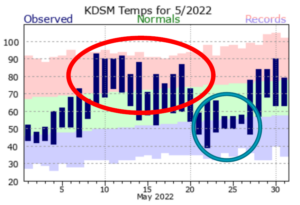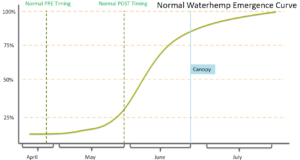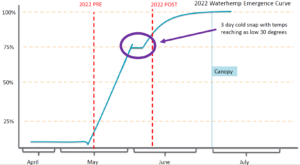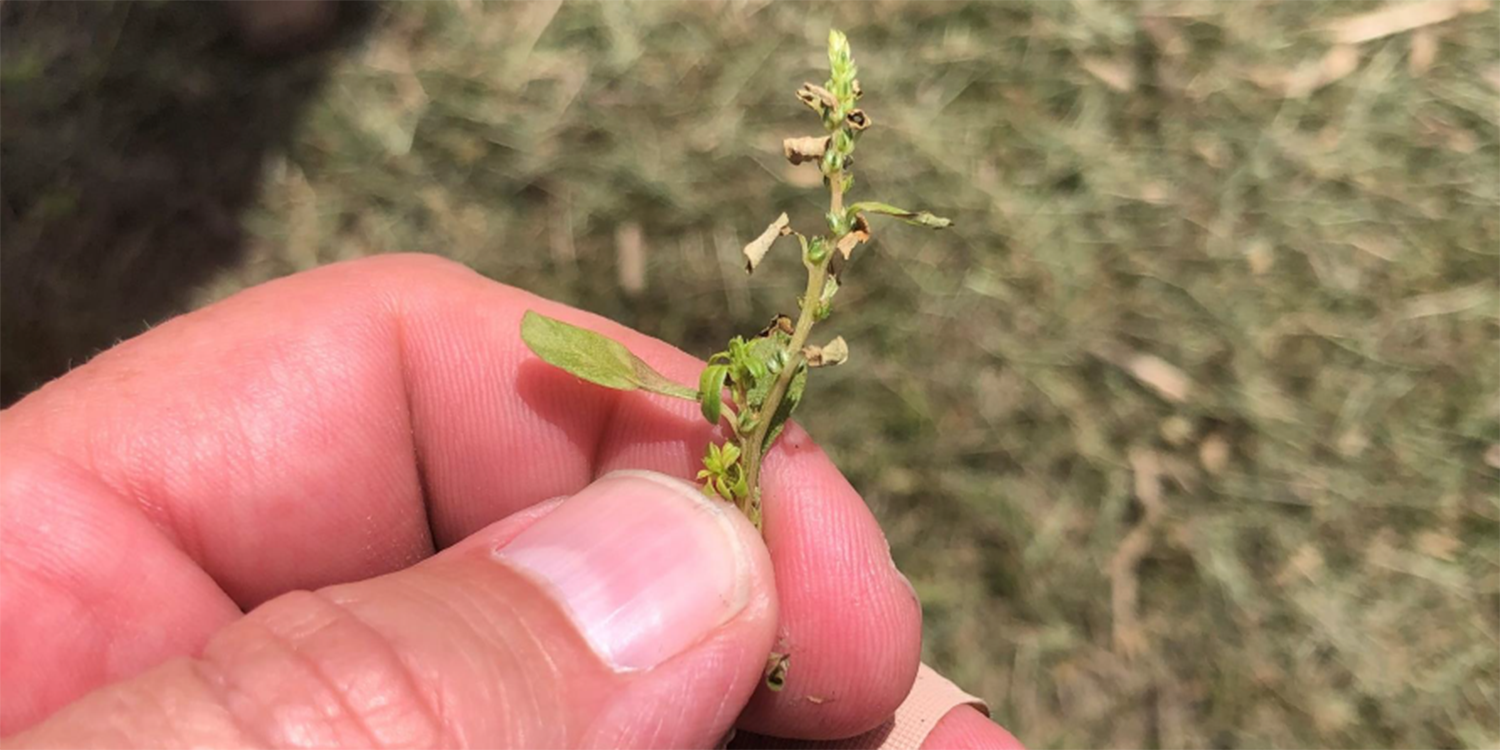If you’re like us, you’re probably scratching your head wondering why nothing seemed to control waterhemp this year.
Zach Trower, an Agronomist from Syngenta, dug into the issue and uncovered some valuable insight we’d like to share with our customers.
The first two weeks of May were 40 degrees and wet – typical spring weather. See Chart 1 – suddenly our weather jumped into the 90’s for about twelve days (circled in red) before dipping back down to the 30’s for a week (circled in blue).

In Chart 2, you can see waterhemp’s normal emergence curve. Our preemergence applications are typically designed to control 25% emergence before we apply post-emergence herbicides to control weeds until canopy closure.

In Chart 3, you can see this year’s waterhemp emergence curve.

Issue #1:
Temperatures spiked to 90 degrees in May. Waterhemp is native to Texas and reaches peak metabolism in 90+ degree weather. When the heat hit, waterhemp emerged with a vengeance. Our preemergence herbicides likely didn’t get applied in time, and were never meant to control that much emergence. We also saw some pre’s failing a little earlier than we wanted due to the dry and hot weather.
Issue #2:
Temperatures dropped back down suddenly right before June. Heat-loving waterhemp’s reaction to the stress was to reproduce. Seed heads were seen as early as June 15th.
Issue #3:
We experienced a very hot and dry summer – conditions waterhemp thrives in. Its metabolism was high and cuticle was thick. The wind in June also made it difficult to apply our postemergence products when and how we prefer. We saw more people using dicamba tips to reduce possible drift, but those ultra-course, big droplets bounced right off waterhemp’s small leaves and we didn’t get the coverage we needed.
Ultimately, valuable lessons were learned this year. We don’t know what 2023 has in store for us, but we do know the factors that we can control. We can’t be effective at controlling weeds with blanket recommendations. Your system must be designed uniquely to work for you. Spray tips, water hardness, timing, adjuvants and so much more all play a crucial role in your level of weed control. Its not just about how much you spend on your herbicide program, its about how you spend it.
In 2023, it will pay to focus on effective rates and critical attention to the details and factors that matter.



